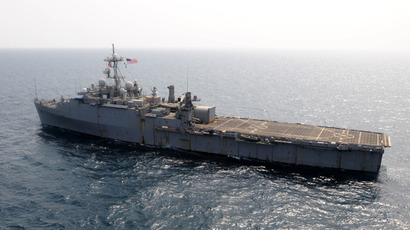Pentagon unveils laser capable of shooting down drones, mortars

The US Army has successfully used a vehicle-mounted laser to shoot down numerous mortar rounds and drone aircraft for the first time.
Taking place over the course of several weeks, the test involved destroying more than 90 incoming mortar rounds and multiple drones. Eventually, the Army hopes to test an even more advanced laser system that could shoot down more dangerous weapons, such as incoming cruise missiles.
Named the High Energy Laser Mobile Demonstrator (HEL MD), the current version of the weapon features three to five lasers that can be attached to the top of a military vehicle in a dome-like turret structure. According to Terry Bauer, the Army’s program manager for the weapon at Boeing, when the HEL MD hits a target like a mortar, it heats up the insides to the point that the mortar explodes in mid-air.
“It falls as a single piece of metal with a little bit of shrapnel. It basically falls where it was going to fall, but it doesn’t explode when it hits the ground,” Bauer said to the Christian Science Monitor. “We turn it into a rock, basically.”
When it comes to shooting down drones, the laser can be used to blind an unmanned vehicle’s cameras and take apart its tail, causing the whole thing to come crashing down to earth.
The Army hopes to use the laser to protect bases that come under fire from mortar and rocket attacks. This happened frequently during the wars in Iraq and Afghanistan, and the Monitor reported that the cheap cost of using lasers would make the weapons a sensible choice for the Pentagon.
Still, officials said it is unlikely that the HEL MD will be ready for combat use before 2022, as the Army is moving to test more advanced versions over the coming years. The current system is equipped with a laser with the strength of 10 kilowatts, but future versions will be outfitted with 50- and 100-kilowatt lasers.
"If you're engaging a target at the same range, a 100 kW laser will destroy the target in one-tenth of the time than the 10kW would," Bauer told AFP.
The HEL MD is just one of the laser-equipped weapons being developed by the United States military. As RT reported in November, the Department of Defense is looking into attaching high-powered lasers to its next-generation fighter jets, which would be capable of tracking and disarming enemy sensors, destroying incoming missile attacks, and going on the offensive.
Meanwhile, the Defense Advanced Research Projects Agency (DARPA) announced in October its plans to develop drone-mounted laser systems that would be able to shoot missiles down from the sky.














